Bushcrafting Skills
Bushcraft 101 | Everything You Need To Know
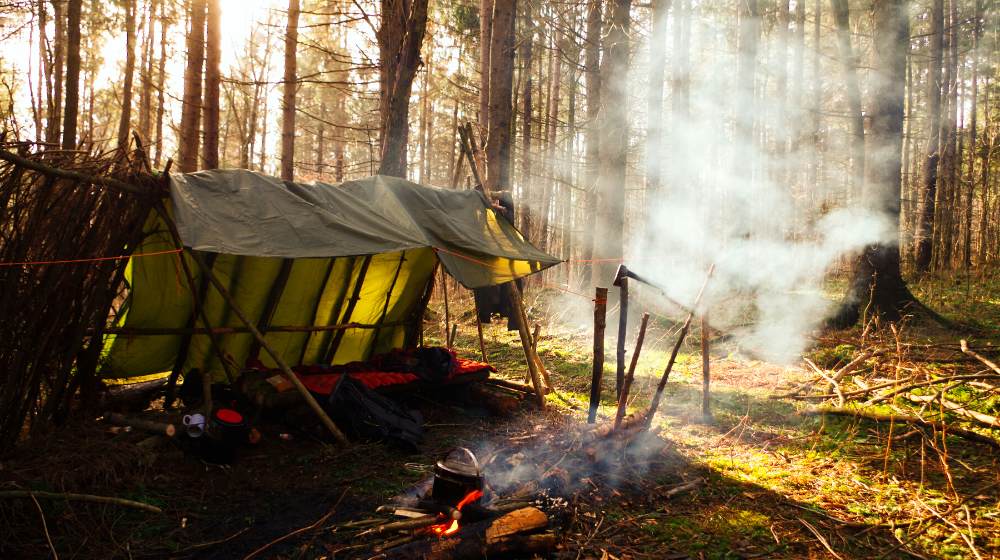
Brace yourself for any situation and unexpected encounters by using your bushcraft knowledge. Strengthen your survival skills for the various demands of the wilderness, and reconnect with and experience the beauty of the great outdoors.
RELATED: 25 Obscure Bushcraft Skills For Survival
Bushcraft | A Guide to Natural Wilderness Survival
1. What Does Bushcraft Mean?
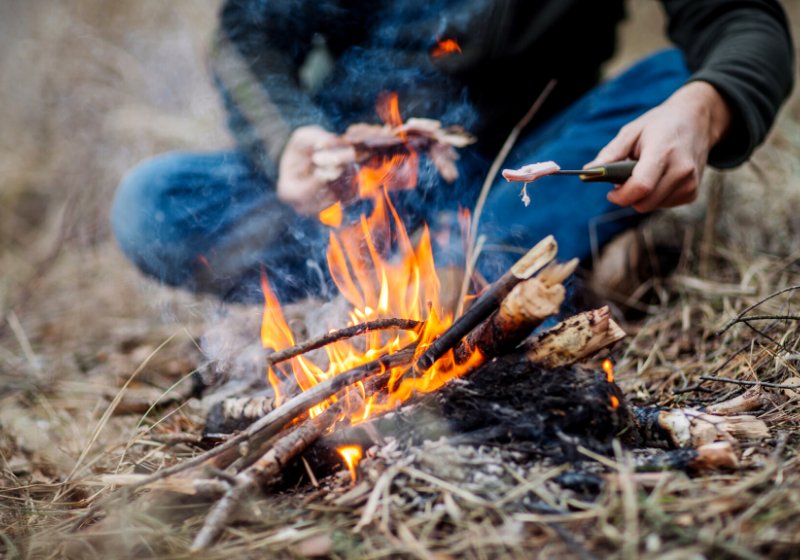
Bushcraft basically pertains to the skills and knowledge you gained by staying outdoors and using these while camping. It’s surviving in the wilderness with a bare minimum, the same as it was for your ancestors.
Building and staying in a tent, hunting, and gathering are some of its related and fundamental skills.
Be it on an island, forest, mountain, or desert, bushcraft is the art of surviving anywhere. It teaches you how to handle yourself in the real and outside world so you can call the remote wilderness your second home.
2. What Is the Difference Between Camping and Bushcraft?
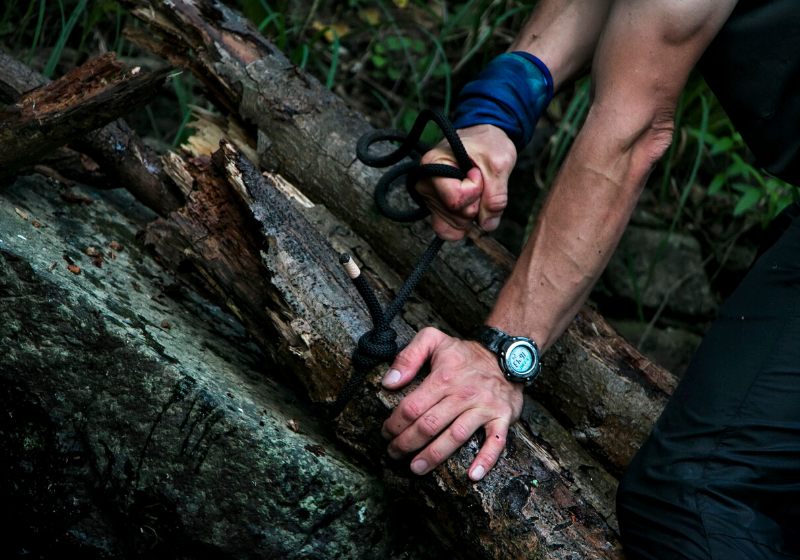
These two terms are alike and have similar features. Both situations include basic essentials such as food, water, fire, and shelter, but here’s a more detailed contrast between the two.
Camping refers to staying outdoors and using basic survival skills for a period of time. It can be done for relaxation and enjoyment, and you can even bring hi-tech gear for a more comfortable experience.
You can go to parks in your recreational vehicle or RV, and already consider it as camping. This activity may sound more lavish, but it covers some characteristics the same as bushcraft.
It still involves fire making, cooking, and sleeping on rough surfaces or tent. Like camping, bushcraft also involves survival skills. However, it entails a primitive lifestyle such as crafting, foraging, and hunting, and uses older ways to sustain life.
Its skills also cover fire making and shelter building, but by using only an ax and the natural resources in your surroundings. One of the bushcraft benefits is it teaches you to appreciate nature.
It lets you enjoy the simple things in life, and makes you realize that you only need little to survive. Additionally, it teaches you how to adapt and be more resilient in living in unfortunate situations.
3. What Are the Six Basic Survival Skills?
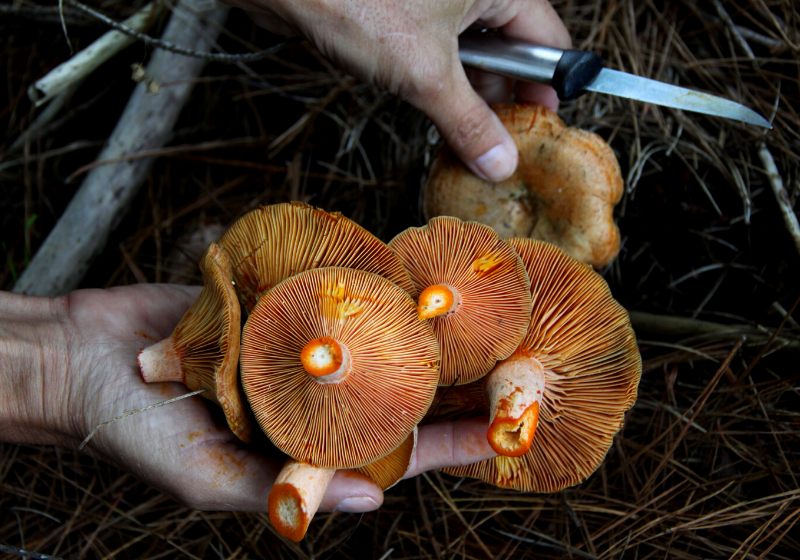
Master the following skills to thrive in the wilderness:
- Foraging and gathering food: You should be able to identify fruits and plants in the wild that can potentially harm or worse, kill you. Additionally, you should learn how to hunt for meat to supply your body with much-needed nutrition.
- Fire making: If you don’t have a match or lighter with you, you should figure out other ways to start a fire. For example, you can chop wood or rub sticks together.
- Collecting and purifying water: Searching for water in the wilderness is necessary to keep your body hydrated, but purifying and making it safe to drink is another essential skill, especially when you don’t have modern equipment.
- Shelter building: Learn how to guard yourself against outside elements. If you don’t have a tent, you should find other ways to shelter yourself from harsh environmental conditions.
- Treating injuries: Your first aid kit has minimal equipment. You should be able to successfully treat injuries while working with the supplies that you have.
- Navigating and traveling: If you don’t have a phone with a global positioning system or GPS with you, knowing how to read a compass would be helpful. This skill is crucial for you to get back home safely.
RELATED: How To Build An Overnight Bushcraft Camp
4. What Should Be in a Bushcraft Kit?
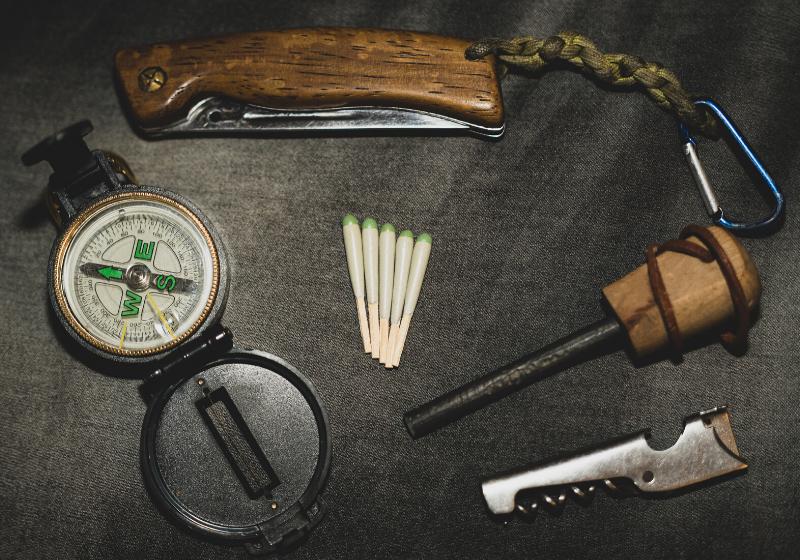
Your bushcraft backpack should be filled with the following gear for your survival:
- Saw: Dealing with the wilderness requires the cutting of wood, and an easy way to do this is by using a saw. A hatchet or knife cannot efficiently cut trees for your shelter.
- Fishing line and hook: These lightweight items are the basic tools you need to successfully catch a fish. Since fishing is a vital bushcraft activity, you should always have these in your bushcraft backpack.
- Kettle: If you want to make some hot coffee or tea, simply put a kettle over your campfire.
- Knife: From cutting cords to digging, carving, and whittling wood, you can do a whole lot of activities with a good knife. Knives are extremely functional and serve different purposes. You can also use them for your self-defense, shaving, and when eating.
- Tarpaulin and cord: A tarp creates a covered space under which you can sleep or live. Include a cord in your bushcraft backpack to tie your tarp to the trees. This cord can also be versatile as you can hang your other equipment on it.
- Clothing: Bring lightweight, waterproof, and durable clothes especially if you’ll do lots of mountaineering and walking. If you’re expecting cold nights, bring pieces that will keep you warm. Don’t forget to bring spare clothes, most especially your undergarments.
- Wash kit: Aim for an effective and small kit with simple items for brushing your teeth and cleaning your body.
- First aid kit: Add necessary items in your bushcraft backpack that can treat both minor and serious injuries.
- Compass: Avoid getting lost while exploring the wilderness. Have a sense of direction and find your way back using a compass.
5. What Is the Best Bushcrafting Knife?
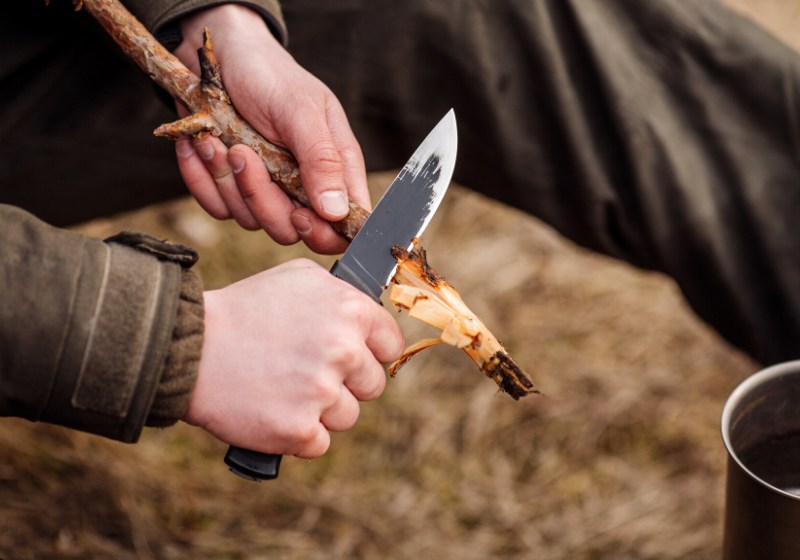
One of the most important tools you must have is a knife. Choose from the following knives that you can use outdoors:
- Boker Arbolito bushcraft knife: The flat spine of this knife makes a great fire starter, and it comes with leather covering for durability.
- ESEE 5P knife: This knife offers a balance between efficiency and comfort, and its carbon steel blade makes it easy to maintain.
- Bark River Knives Aurora bushcraft knife: Designed to withstand various conditions, this knife is comfortable to grip from any angle.
- Ontario Knife Company 8696 bushcraft knife: With its lightweight nylon covering, you can attach this knife to your belt and carry it anywhere.
- Benchmade 202 Leuku knife: The basic and timeless design of this knife makes it useful both in wet and dry conditions.
- Fallkniven A1 knife: This knife may come a bit pricey, but it’s worth your investment especially if you’re critical with blades.
- Morakniv bushcraft knife: If you’re on a tight budget, this knife is one of the best given that it’s widely used and has a lifetime warranty.
- Tops Knives B.O.B Brothers of Bushcraft knife: Its iconic, exceptional, and aggressive design doesn’t take its blade’s versatility for granted.
- Helle Knives Temagami field knife: Founded in 1932, this trustworthy tool comes with a premium leather cover.
- Spyderco Zoomer bushcraft knife: Designed by and named after a survivalist, this knife was carefully crafted for your activities.
Bushcraft is an essential outdoor skill in order to sustain life. Watch this video by Zip HD to learn about the survival gadgets you can buy for your journey:
Add bushcraft to your outdoor survival kits and learn how to use the resources from the wilderness. Get ready for your next expedition and maximize your time outdoors.
What other bushcraft ideas do you have in mind? Share them with us in the comments section below!
Up Next:
- 7 Bushcraft Books to Read For Survival
- Bushcraft Chairs for Comfortable Camping
- Survival Food – Raising Rabbits for Meat | Plus Fur Project Ideas
Calling all preppers, craftsmen, bushmasters, outdoorsmen and all-around skilled people, Survival Life needs YOU! Click here if you want to write for us.
Don’t forget to stay connected with us on Facebook, Twitter, Pinterest, and Instagram!
-

 Do It Yourself7 months ago
Do It Yourself7 months agoParacord Projects | 36 Cool Paracord Ideas For Your Paracord Survival Projects
-

 Do It Yourself9 months ago
Do It Yourself9 months agoHow To Make Paracord Survival Bracelets | DIY Survival Prepping
-

 Do It Yourself9 months ago
Do It Yourself9 months ago21 Home Remedies For Toothache Pain Relief
-

 Do It Yourself10 months ago
Do It Yourself10 months agoSurvival DIY: How To Melt Aluminum Cans For Casting
-

 Exports8 months ago
Exports8 months agoAre Switchblades Legal? Knife Laws By State

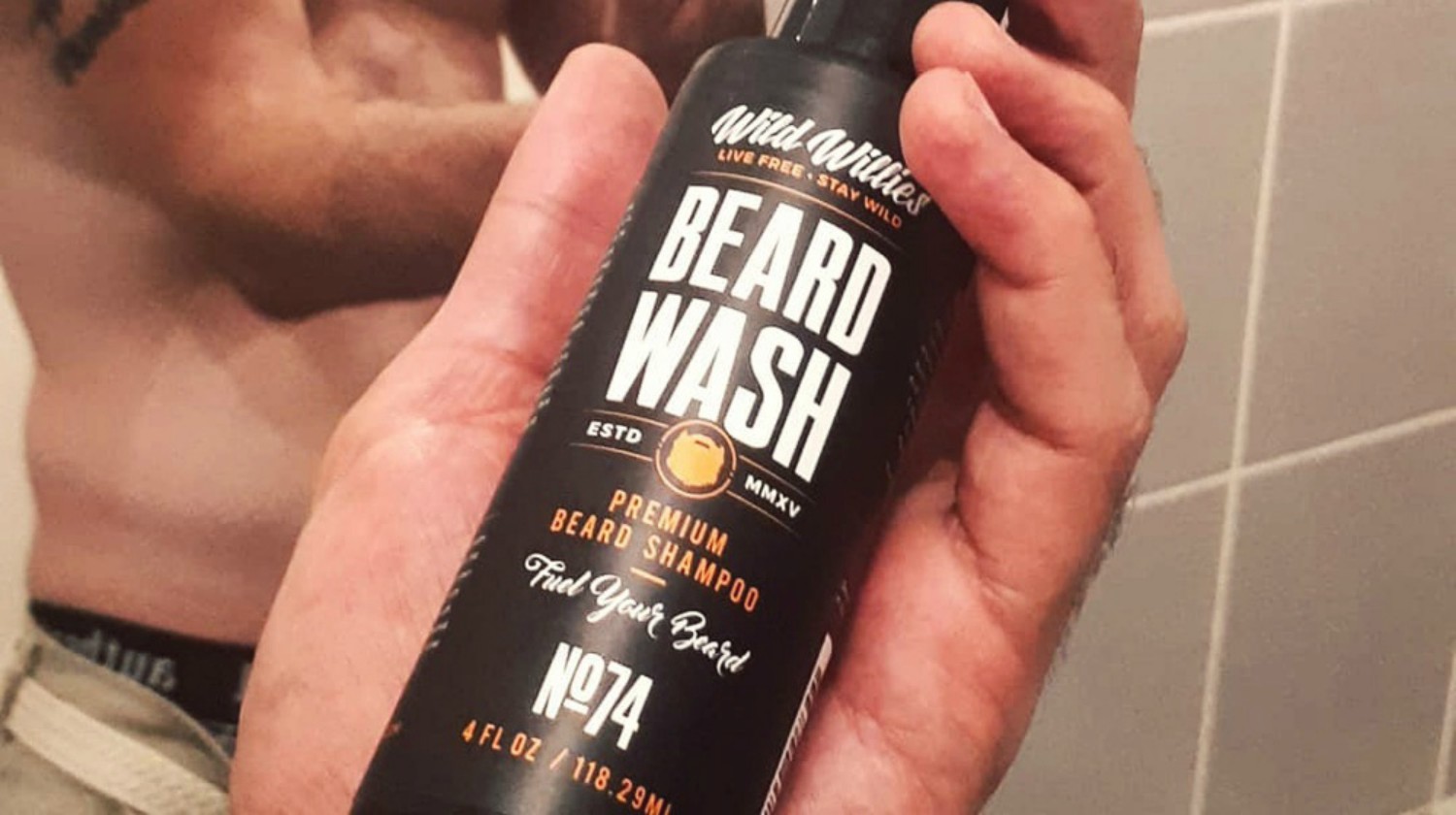




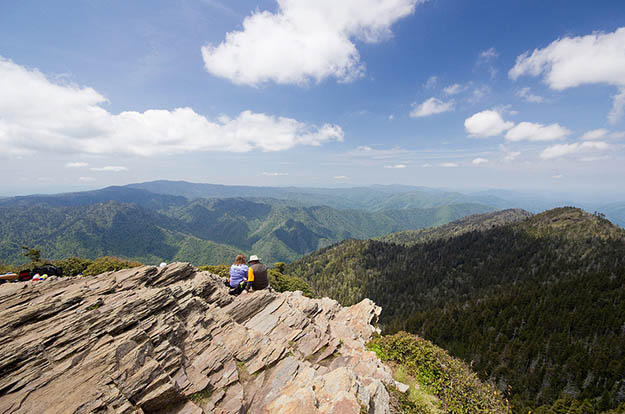

Don Morris
January 22, 2021 at 11:54 AM
Rather simplistic approach to a varied and complex subject. I have lost count of the many fires i have built over the past six decades hiking, climbing, and peer forming SAR, but I cannot recall ever having to use an axe, saw, or knife to gather the abudnat dead twigs and ranches to make a roaring fire – just bare hands.
If you want really pure water, just boil it – the most positive means of purification.
Edward Henrichsen
January 23, 2021 at 9:45 AM
Boiling will maybe kill any bacteria in the water. But it will not get rid of any chemicals in it. You need other means for that.